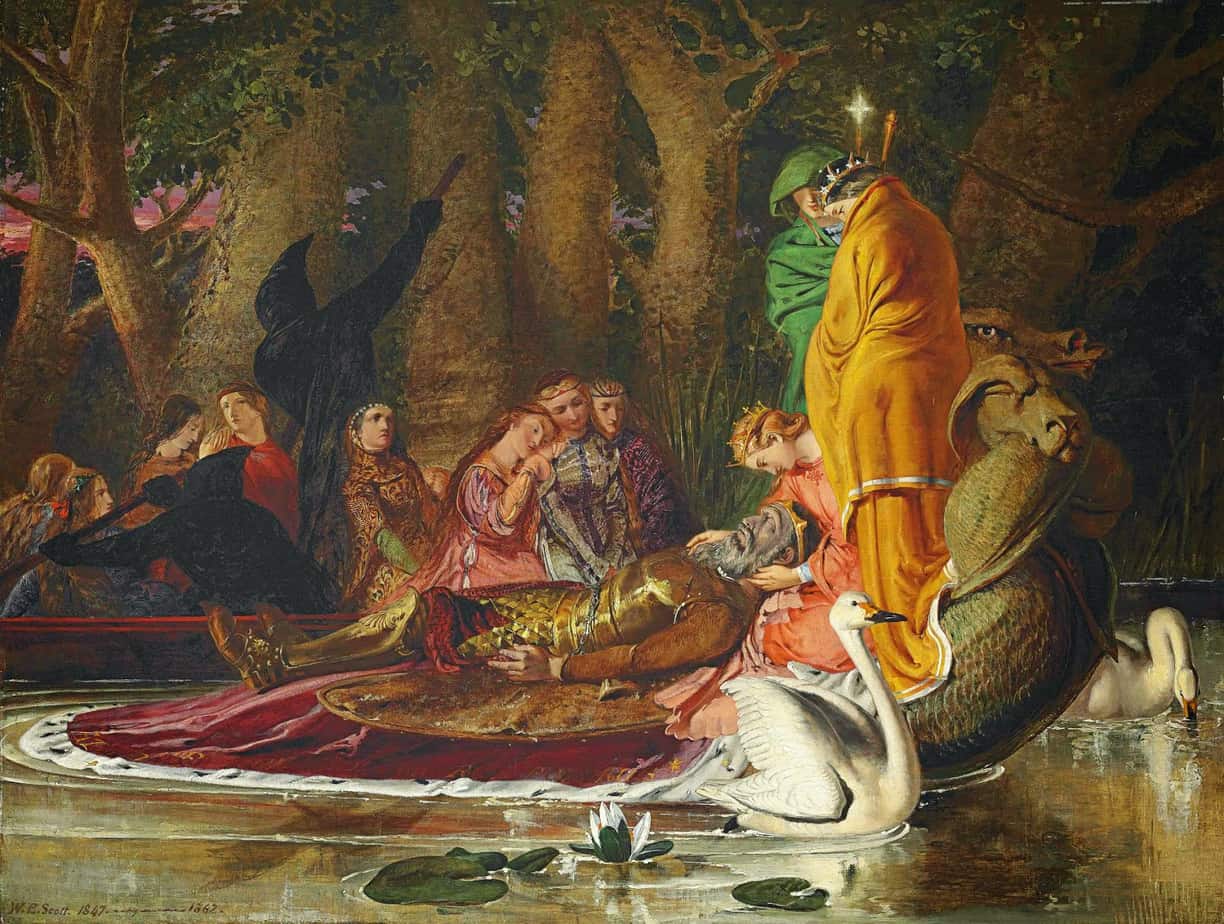Was King Arthur real? People have been hoping so for 1500 years. And how similar was he to the historical Jesus? See: In Search of the Historical Arthur by C. Dal Brittain, professor of medieval history and fantasy writer
Another good place to start with a King Arthur story is with “The Legend of King Arthur”, read aloud at the 1001 Classic Short Stories and Tales podcast.
Everyone who knows anything about Arthurian legends is fucking LAUGHING at the idea of something being “faithful.” Faithful to what? To which version? To which legends? https://t.co/jdu4rdpfOc
— Zack Davisson – Previously Notable (@ZackDavisson) February 15, 2021
Since there is no source material, the idea of a “faithful” retelling of the Arthurian legend must mean that all parties in the film are…religious? Timely (ala Old Faithful)? Devoted? Loyal?
I’ve thought of this so much that I now have no desire to see such a film whatsoever. https://t.co/6cNTyON53N
— Mary Queen of Scots (@McmillionTj) February 16, 2021
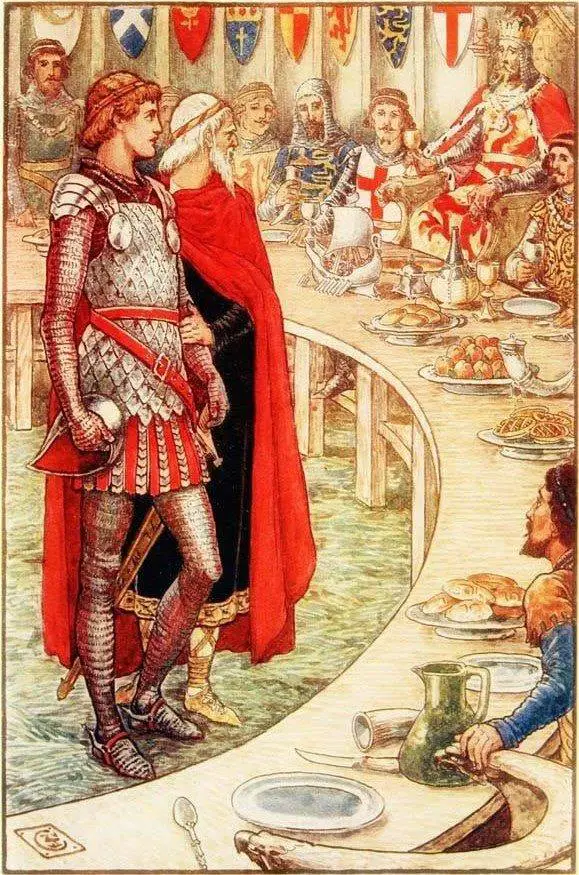
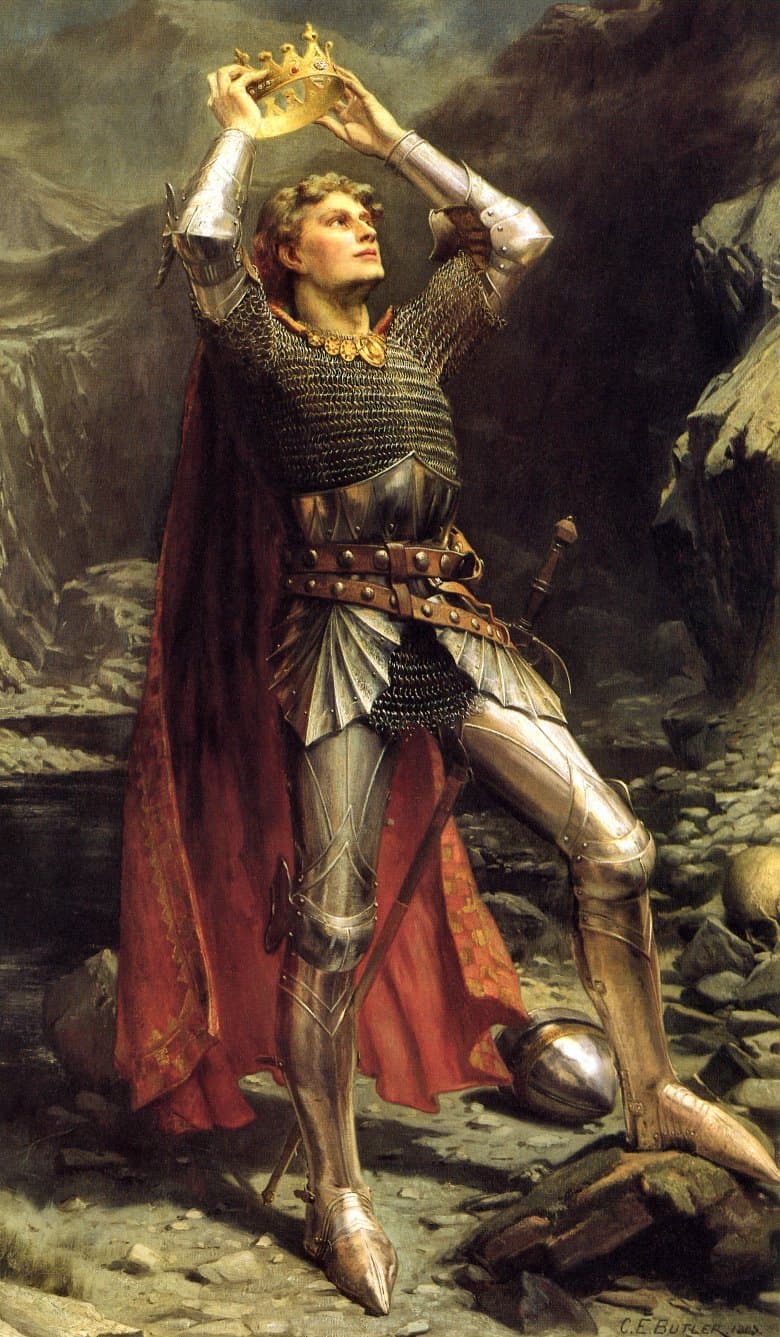
Was King Arthur A Real Person?
King Arthur is a fabled British leader, said in medieval tales and chronicles to have ruled over England and defended it against Saxon invaders following the withdrawal of the Romans in the fifth century. But at the start of the Dark Ages*, when the island was under constant threat of invasion, and at various other troubled moments in their history, the inhabitants of Britain longed for a strong leader who could unite their fragmented regions under one rule and enable them to defend themselves. Hence the legend of King Arthur, the saviour king, was hugely appealing, its popularity spreading over the years, thanks especially to Geoffrey of Monmouth’s History Regnum Britanniae (‘History of the Kings of England’), written in about 1136, and to Thomas Malory’s Le MOrte d’Arthur, published in 1485.
Largely thanks to Malory, the legend of King Arthur was integral to the medieval conception of English history, but with the waning of the Middle Ages came a lessening of belief in the story. While the stories continued to be popular, their truth was disputed. The sixteenth-century humanist scholar Polydor Vergil famously rejected the idea of a post-Roman Arthurian empire, calling it a fabrication — much to the horror of Welsh and English antiquarians.
Albert Jack, Pop Goes The Weasel, in a discussion about the nursery rhyme Good King Arthur.
*(Actually, don’t call them the Dark Ages. “Dark Ages? What Dark Ages!? Did the light go somewhere? No, no it didn’t… In this episode, Ken and Glen discuss how a very misleading term for the Middle Ages came about (hint – it has something to do with Rome!) and why it has rightly fallen out of use…by them, anyway.”)
Features Of Arthurian Stories
Arthurian retellings are generally considered Historical Fantasy (or myth, depending) because there is a lot of magic, so the events aren’t anywhere near believable.
One of the most popular contemporary King Arthur series is the Avalon series by Marion Bradley. Neopaganism also gave King Arthur stories a modern resurgence.
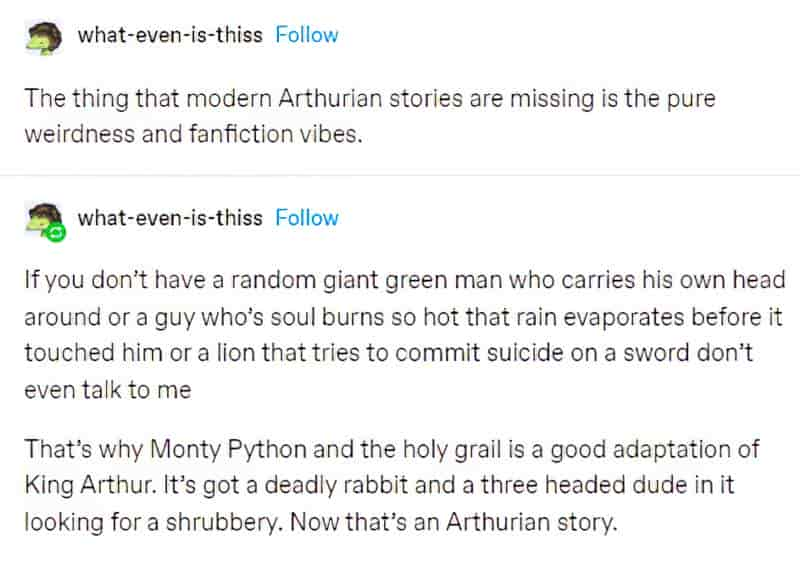
Arthurian Settings
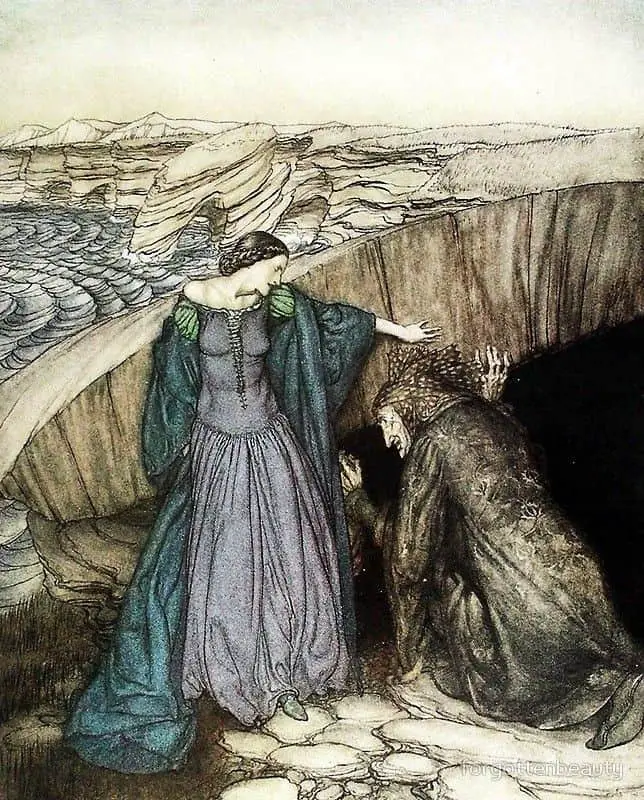
The Wild is any place knights have to go to prove themselves, usually to the woods or to the mountains.
These settings stopped being so useful after a while, because Victorian writers transformed woods and mountains into pleasant settings. So now storytellers writing Arthurian tales decided to give their heroes less naturalistic settings.
One example is The Dark Tower in a poem/ballad written Robert Browning: “Childe Roland to the Dark Tower Came” (a Victorian fairy poem, and O.G. To T.S. Eliot’s The Waste Land.)
[In 535 CE] a volcano, probably Krakatoa, erupted with such unbelievable violence that “it exploded” would be a better descriptor. It threw countless tons of superfine dust and ash into the atmosphere, turning skies grey globally. It was like a nuclear winter without the bomb.
Without the warmth of the sun, ambient temperatures dropped globally. Ocean water didn’t evaporate at the same rate, so fewer rainclouds were formed, and droughts took hold. Harvests wouldn’t normalize again for 30 years.
In Mexico, the city-state of Teotihuacan saw population collapse trackable in its burial trends; babies, children, and people under 25 made up 70% of burials, instead of the normal 40%. The city of +100,000 eventually turned on their rulers and priests, burning temples and homes.
They then abandoned the place. Mesoamerica wouldn’t see another city Teotihuacan’s size for 300 years.
On the Eurasian steppes, horse cultures suddenly had less grass to feed their herds. As a result of the die-offs, the agrarian settlements they usually extorted drove them off, and they limped west, where they took over the local groups, and expedited the fall of Byzantium.
In a 538 CE letter to a subordinate, Roman statesman Cassiodorus described “jumbled-up seasons,” “A winter without storms, a spring without mildness, and a summer without heat,” and a “bluish” sun too dim to cast shadows.
The Arthurian legends, which originally recalled this time period, describe King Arthur wandering a grey countryside full of dead trees, and villages depopulated by half.
Irish annuls describe a “failure of bread” for years on end, and Chinese chroniclers describe a “dry fog” that wouldn’t lift. Lower temperatures enabled plague bacteria to spread for easily, dealing the mortal blow to Celtic Britain, which would then fall to the Anglo-Saxons.
And here’s a doozy. The Great Dam of Marib. Yemen, a powerful force due to trade and location, experienced an unprecedented, climate-changed-fueled drought-and-flood cycle that kept slamming the damn until the finally, permanently breached in the 570s.
This dam was responsible for capturing and storing monsoon rains that irrigated the fields in the countryside, providing for the city of Saba, thought to have been the Biblical “Sheba.” This literally ruined them.
The city’s entire population was reduced to refugees from famine, and many fled north, to the city of Medina, with what the could carry. This shifted the power balance of the region in an instant.
In Medina, one prominent family made a name for themselves by importing food to provide for these refugees, many once powerful and influential themselves, and garnered a great deal of goodwill (and a reputation for kindness/empathy) in the process.
Iron Spike
Associated With King Arthur
The Search for the Holy Grail
The Holy Grail is a sacred cup thought to have been used by Jesus Christ at the Last Supper. Sir Galahad found it but died on his way back home (to cut a long story short). The Holy Grail is related to the category of fairy tale known as Fairy Cup Legends.
The Magic Sword of Excalibur
Before he expired Arthur threw his sword into the lake. A hand appeared in the waves and caught it.
The Knights of the Round Table
King Arthur’s knights sit around a round table. This is significant because there is no head. Every one of his knights has equal status.
The table was first described in 1155 by Wace.
What are the names of the knights? That depends which story you read. The names are always changing.
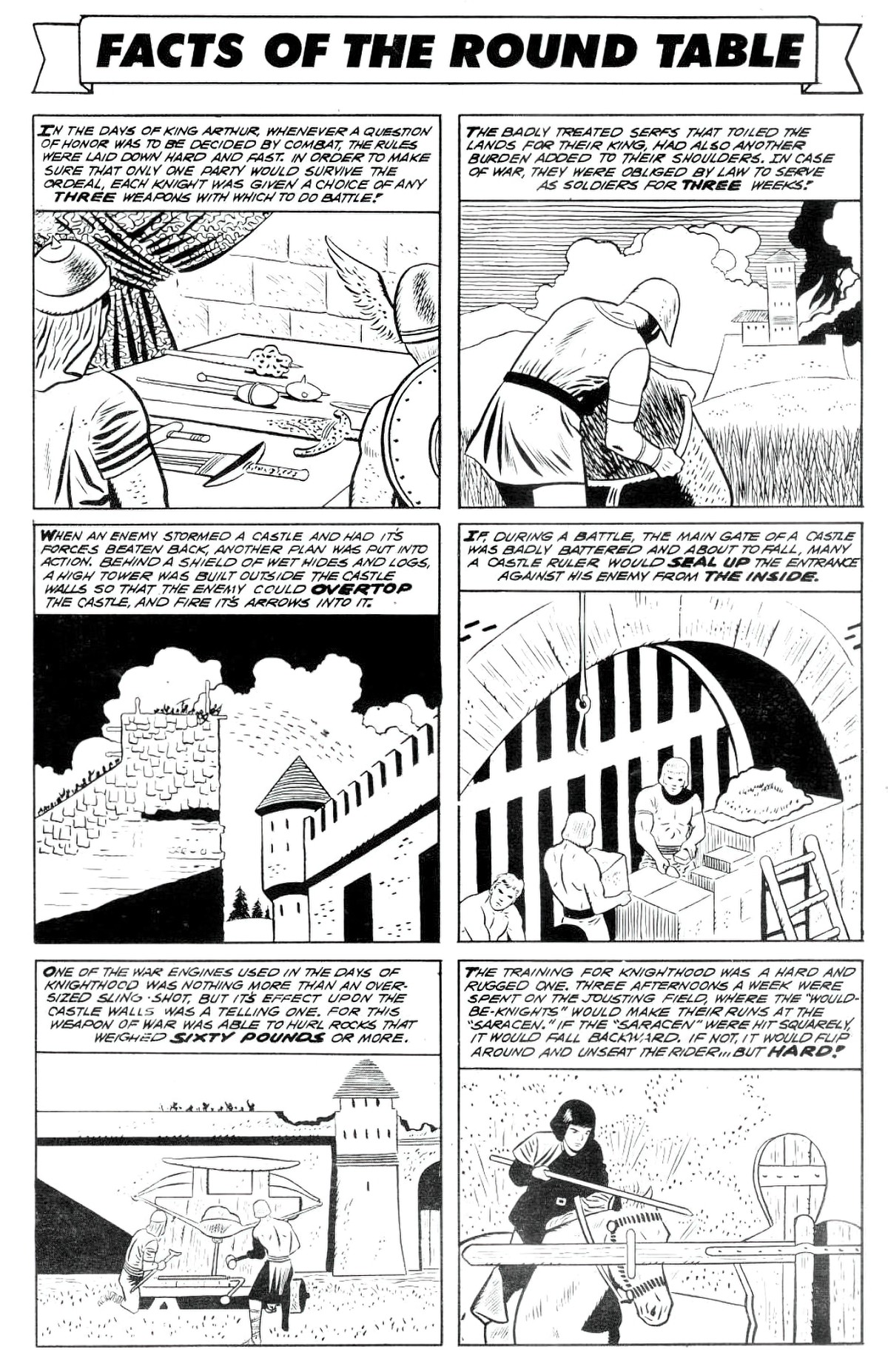
Merlin
Arthur’s ally
Camelot
a perfect community created by himself
Guinevere
Arthur’s wife
Morgan le Fay
Arthur’s older half sister.
According to The Life of Merlin by Monmouth, Avalon was ruled by nine sorceresses or sisters. These sisters could shapeshift. They were skilled in healing and magic. Morgen (or Morgan le Fay) is the eldest of the nine and takes care of Arthur.
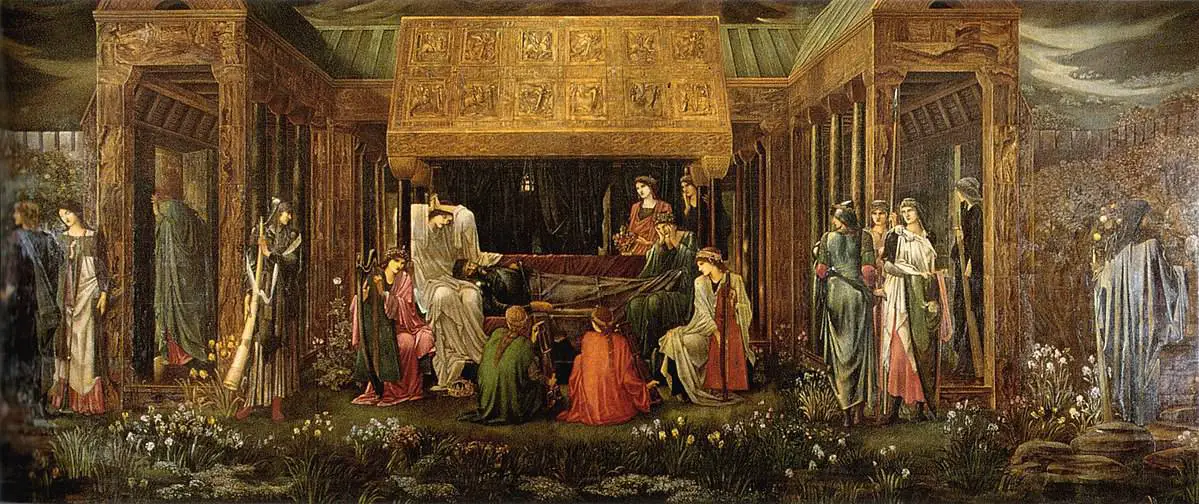
Morgan is basically the aristocratic evolution of the category of fairy who leaves a silver coin in the shoes of tidy maids. Arthur’s enemy.
This character was re-visioned as a feminist in the 1970s by Marion Bradley in Mists of Avalon. However battered and bruised she gets, she rises again like a Phoenix, the O.G. Strong Female Character. But she isn’t especially skilful, just resilient. For example, her spells rarely work. In The Once and Future King series by T.H. White Morgan le Fay is a witch archetype out of Hansel and Gretel, who tries to build a castle out of milk and pork hoping to attract children.
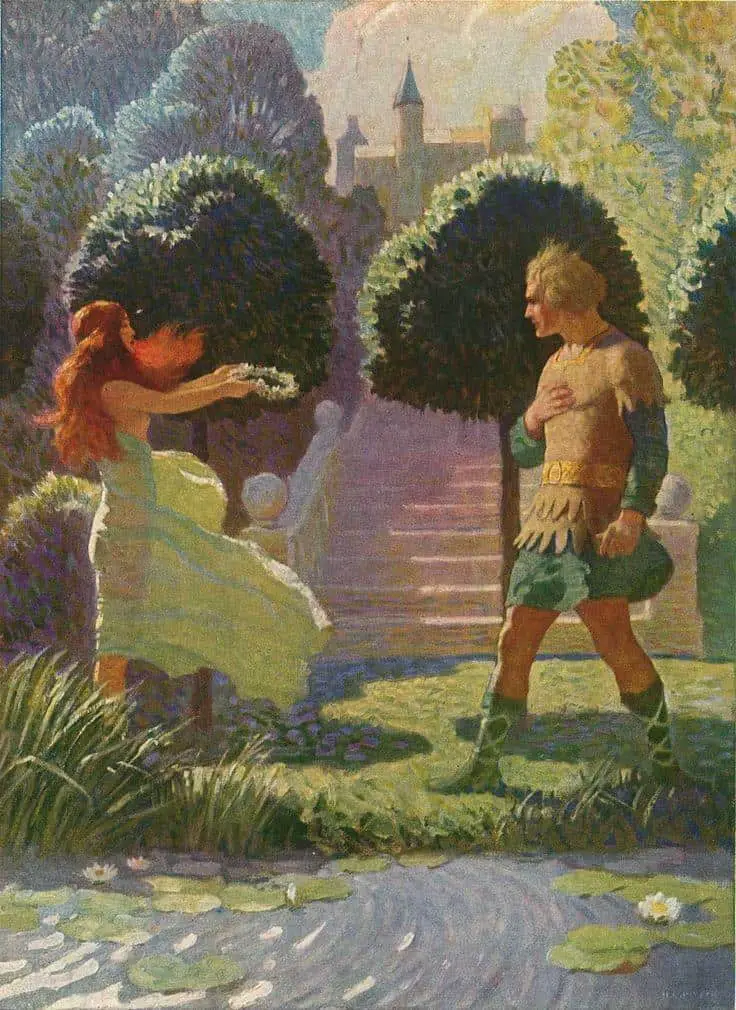
Sir Lancelot
One of Arthur’s knights and Guinevere’s lover
Brave Sir Galahad
The best and purest of King Arthur’s circle, the illegitimate son of Sir Lancelot
Elaine
Galahad’s mum, daughter of King Pelles, employs a sorceress to help her appear in the likeness of Queen Guinevere to trick Lancelot into bed with her.
Mordred
Arthur’s nephew. Mordred murdered Arthur by sword.
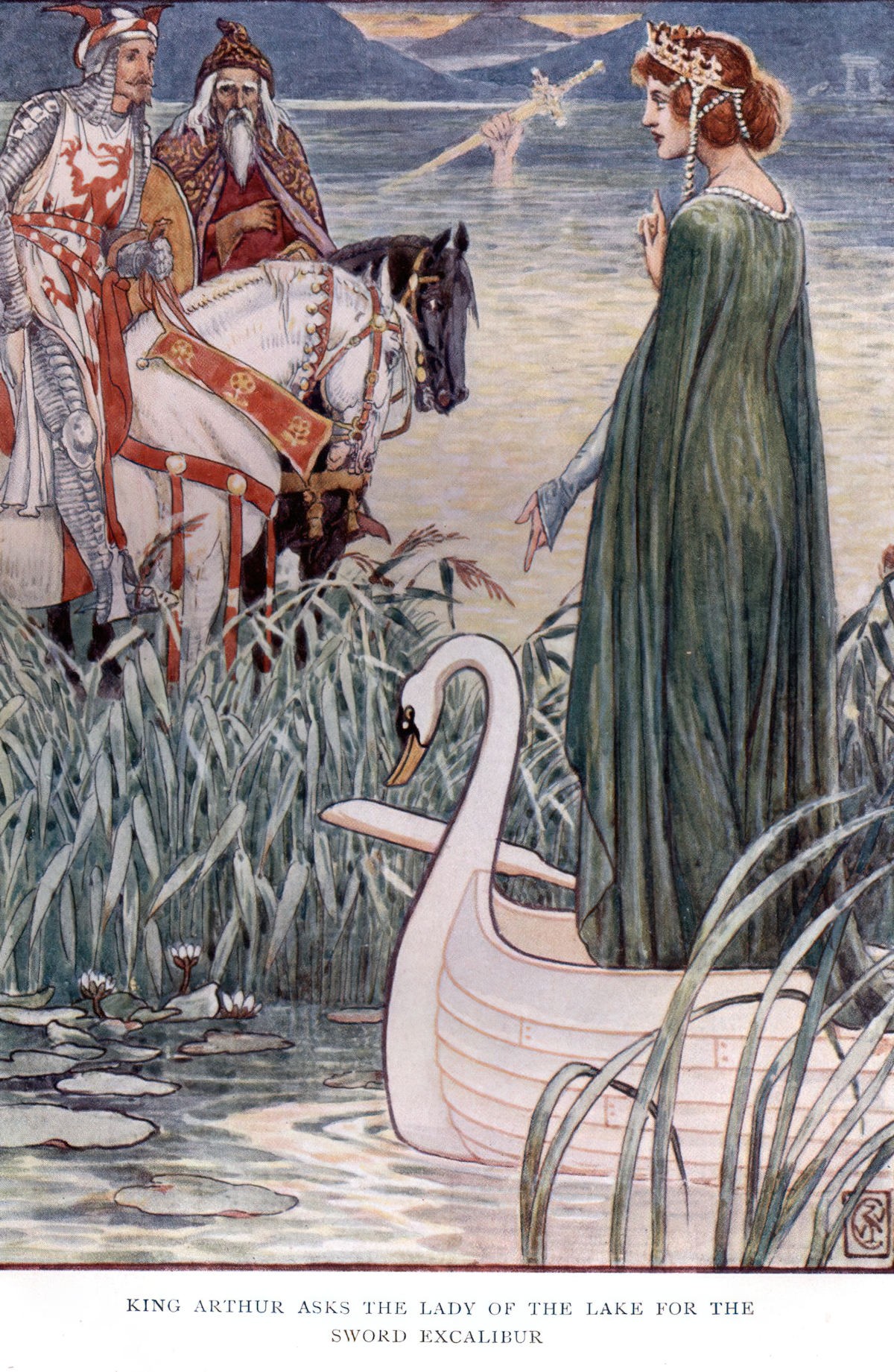
The Isle of Avalon
After Arthur was killed a barge happened to pass by on a lake. Three women, one of whom is Morgan le Fay, take him to the Isle of Avalon. Some legends say Arthur died on Avalon. Other legends say he’s sleeping in a cave somewhere. He’ll wake up at England’s greatest need. (If not for Brexit, when, though?)
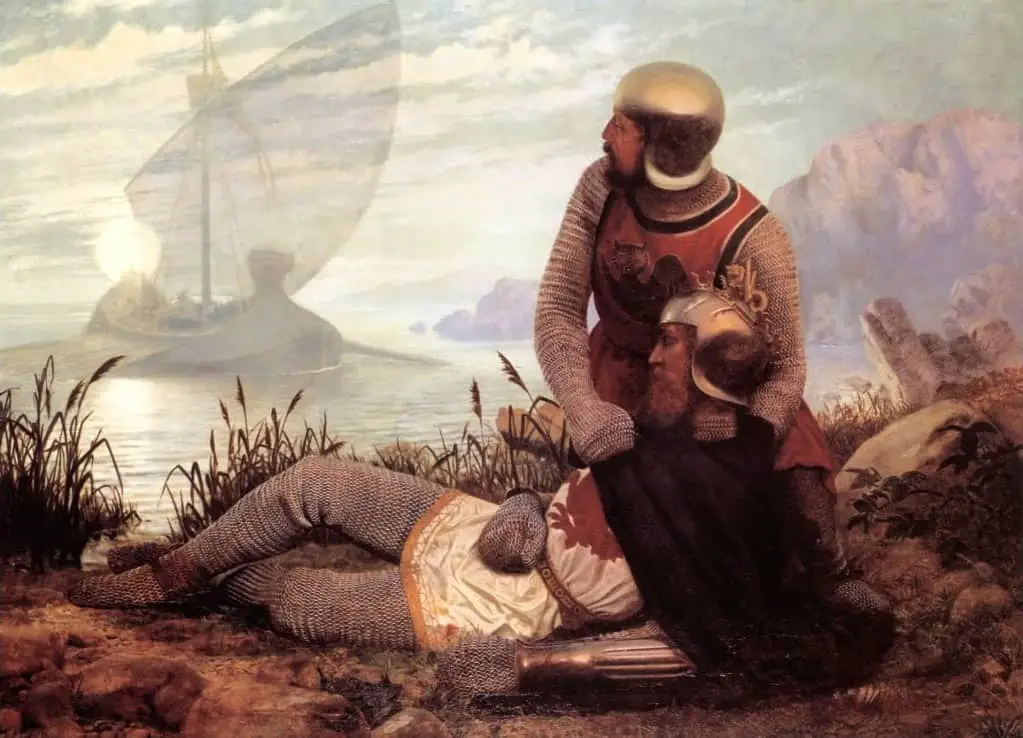
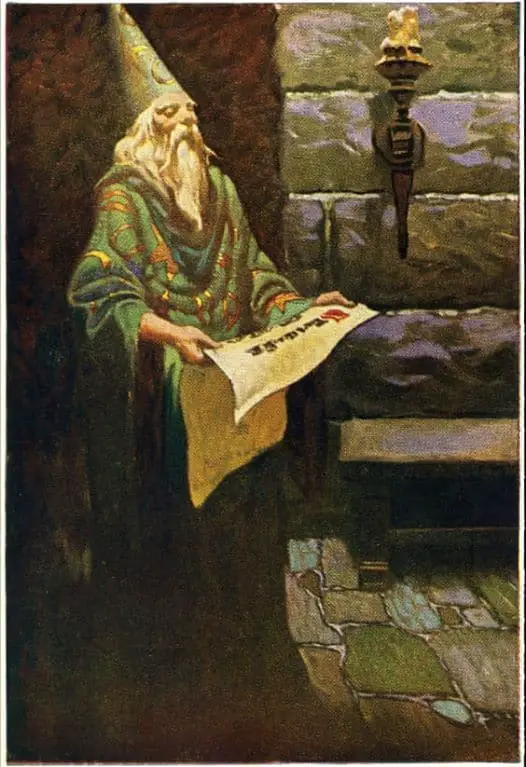
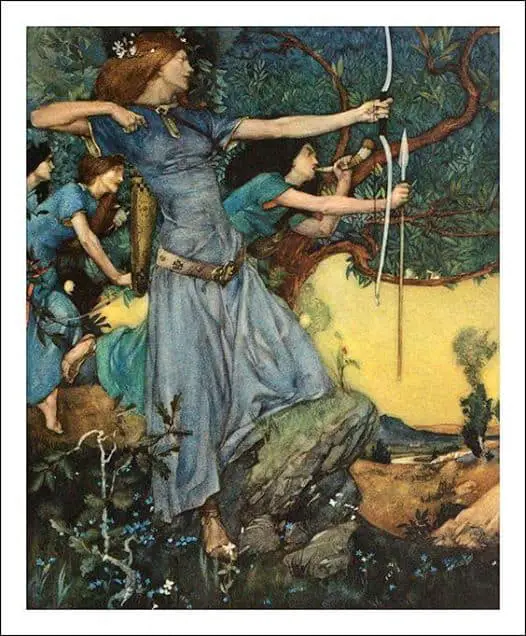
THE GRAIL LEGENDS
The best known of these is probably ‘The Holy Grail’ by Robert de Boron, but since the grail is such an important symbol in the Arthurian stories, there are more than one.
- The Story Of The Grail by Chrétien de Troyes (a poem). It was never finished, actually.
- Various continuations of that poem written by other people
- A German story called Parzival by Wolfram von Eschenbach
- There’s a Welsh story
- etc
Basic Plot of a Grail Legend
- Joseph of Arimathea acquires the chalice of the Last Supper to collect Christ’s blood upon his removal from the cross.
- Joseph is thrown in prison, where Christ visits him and explains the mysteries of the blessed cup.
- Upon his release Joseph gathers his in-laws and other followers and travels to the west, and founds a dynasty of Grail keepers that eventually includes Perceval.
SYMBOLISM OF ARTHURIAN STORIES
The Grail Legends are full of sexual symbolism.
A knight, usually a very young one whose “manhood” is barely established, sallies forth bearing his lance, which will certainly do until a phallic symbol comes along. The knight becomes the emblem of pure, if untested, maleness in search of a chalice, the Holy Grail, which hit you think about it is a symbol of female sexuality as understood once upon a time: the empty vessel, waiting to be filled. And the reason for seeking to bring together the lance and the chalice? Fertility. (Freud gets help here from Jessie L. Weston, Sir James Frazer and Carl Jung, all of whom explain a great deal about mythic thinking, fertility myths, and archetypes.) Typically the knight rides out from a community that has fallen on hard times. Crops are failing, rains have stopped, livestock and possibly humans are dying or failing to be born, the kingdom is turning into a wasteland. We need to restore fertility and order, says the ageing king, too old now to go in search of fertility symbols. Perhaps he can no longer use his lance, so he sends the young man. It isn’t wanton or wild sex, but it’s still sex.
How To Read Literature Like A Professor by Thomas C. Foster
Problems With The King Arthur Story
King Arthur stories are part of the reason why the male hero has been central since the fifth century. Before that, females were often the main characters in stories, because they were thought to have produced the world.
The Centrality of the Adventure Story, Marjery Hourihan
Examples Of Arthurian Stories
- Monty Python and the Holy Grail
- Shrek The Third
- The Usual Suspects
- Star Wars
- Forrest Gump
- Ulysses
- Lord of the Rings
- The Voyage Of The Dawn Treader — The other Narnia books are Biblical but this one has a distinct Arthurian feel.
The alternative world of Narnia into which CS Lewis’s four children repeatedly escape is beautiful and magical but fraught with danger. Like Nesbit, he explores the possible consequences of magic, but he also provides spiritual balm in the figure of Aslan, the talking lion.
There are many examples of this guiding, protective, mysterious figure in the literature of this Second Golden Age. Will in Susan Cooper’s The Dark is Rising series has a wise, magical old teacher in Merriman Lyon – or Merlin, as he turns out to be. Alan Garner’s Colin and Susan have the wizard Cadellin, and Frodo Baggins’s Companions have Gandalf. All of these draw on national myth, both Celtic, Norse and Arthurian, but above all they draw on the European concept of God, and it’s no surprise to find the same figure popping up more recently in Harry Potter’s Professor Dumbledore. And no wonder we needed him. In the 1960s, it wasn’t enough for a child to find her father or restore the family fortune. This time, we were told, we needed to save the world. By the time you get to Philip Pullman’s His Dark Materials, it’s not just this world which needs saving, but the multiverse.
Amanda Craig
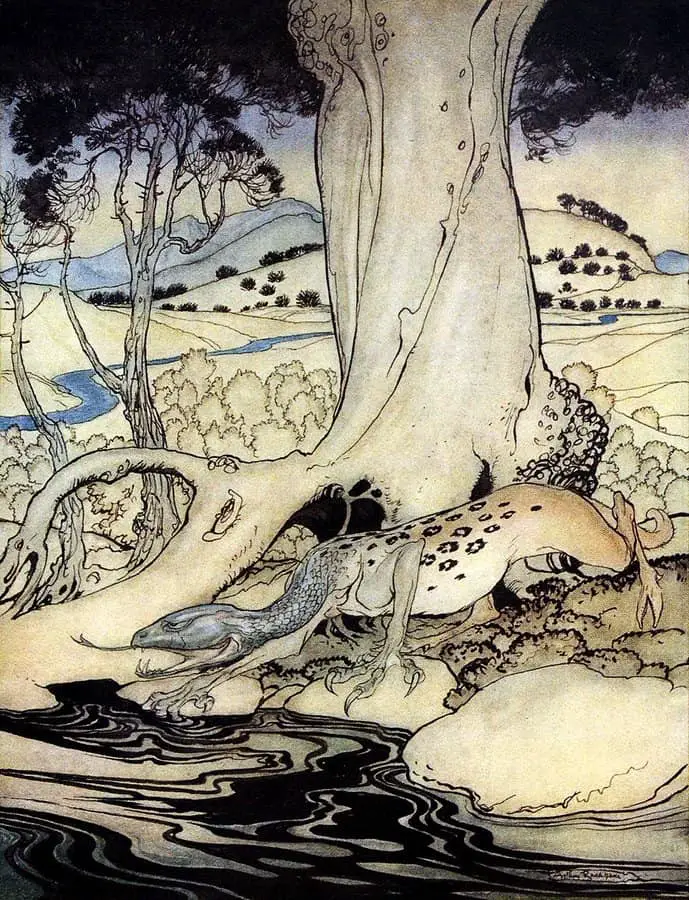
King Arthur and Westerns
In the characters of the American Western film, [Frank] McConnel notes that we can see, with very little stretching, the heirs to the Arthurian legends. In westerns, the king or founder, is represented by the figure of the frontiersman or the cattle baron who carves out from an inhospitable landscape a space that human beings can live in. Examples are provided by the frontiersman of John Wayne and especially the film Red River. It is a vision created by film director John Ford. Here is the city as it was founded and the audience is left to imagine the way things must have come to be the way they are.
Symbolism of Place
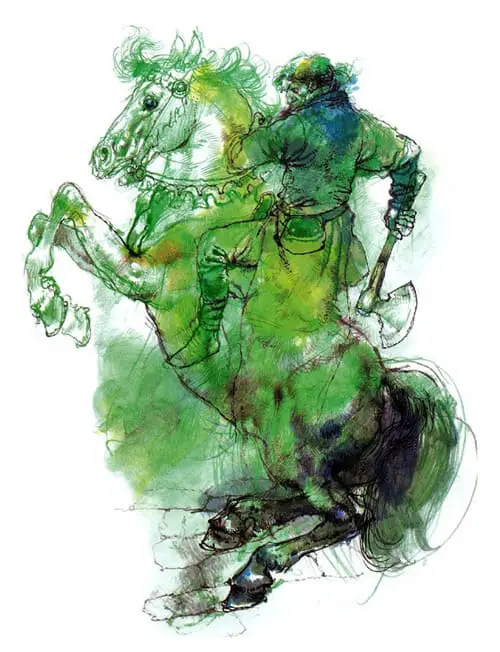
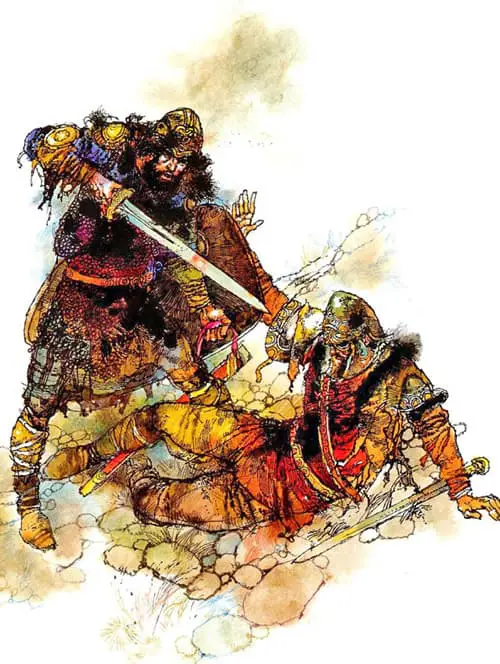
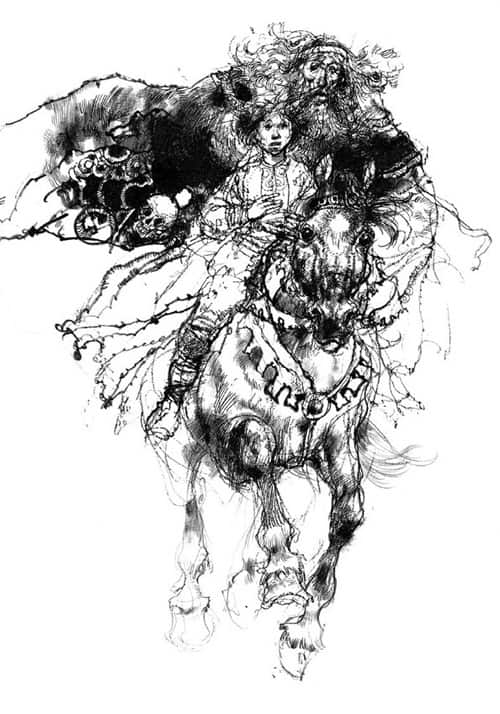
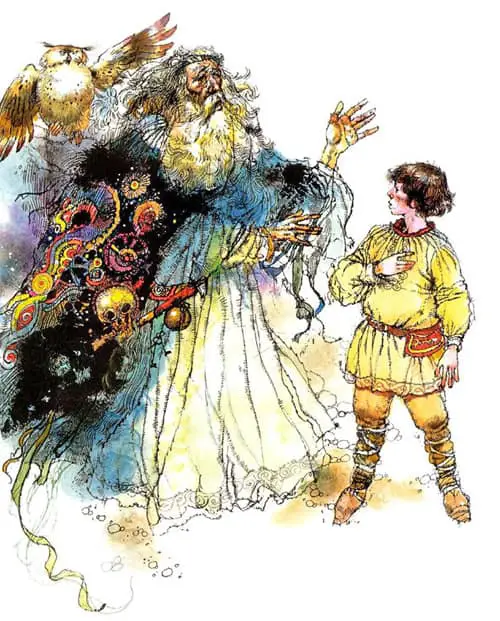
Subverting The Myth of King Arthur
WHEN good king Arthur ruled this land, He was a goodly king; He stole three pecks of barley-meal, To make a bag-pudding.
A bag-pudding the king did make,
And stuffed it well with plums: And in it put great lumps of fat,
As big as my two thumbs.
The king and queen did eat thereof,
And noblemen beside; And what they could not eat at night,
The queen next morning fried.
Of the above nursery rhyme Jack writes:
This nursery rhyme, with its down-to-earth king and queen, would seem to stem from this period [the 16th century]. After all, far from being a heroic figure of high chivalry — as portrayed by Malory — this goodly king is now a thief. Arthur’s famous banquets, where no one could eat until a marvel had occurred (from headless knights and damsels in distress to visions of the Holy Grail), have turned into a slapstick pudding-making and -eating session. Guinevere, rather than being the mysterious, beautiful queen and object of forbidden love, is demoted to a penny-pinching housewife, thriftily frying up the remains of the pudding for breakfast. It’s hard not to feel that the author of the rhyme must have heard the Arthurian legends one time too many. Opening with When good King Arthur ruled this land, this rhyme mocks both the high-flown poetry of Le Morte d’Arthur and wistfulness for ye goode olde days that almost certainly never were.
Albert Jack, Pop Goes The Weasel
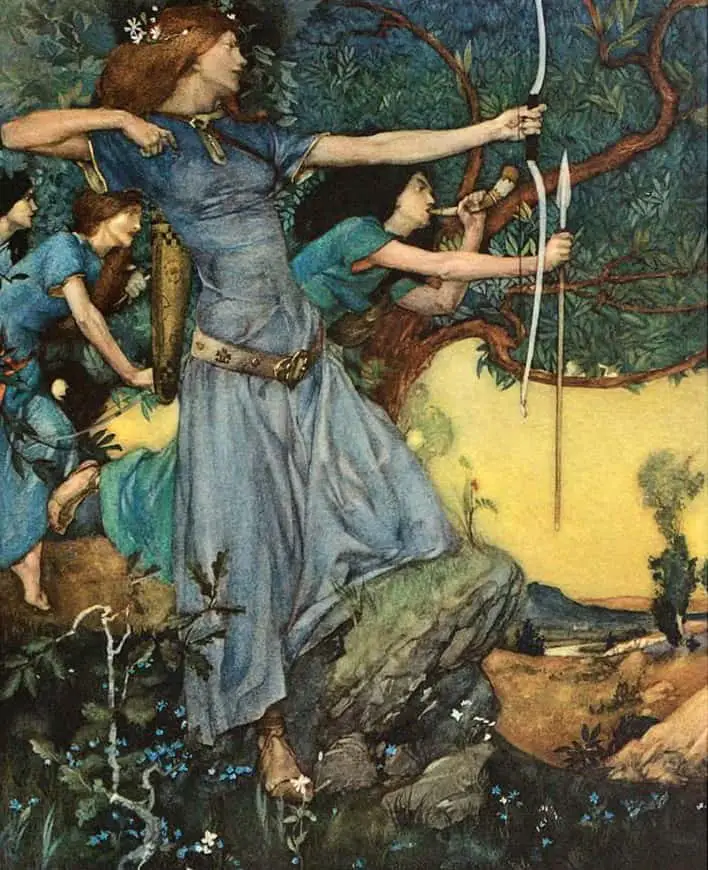
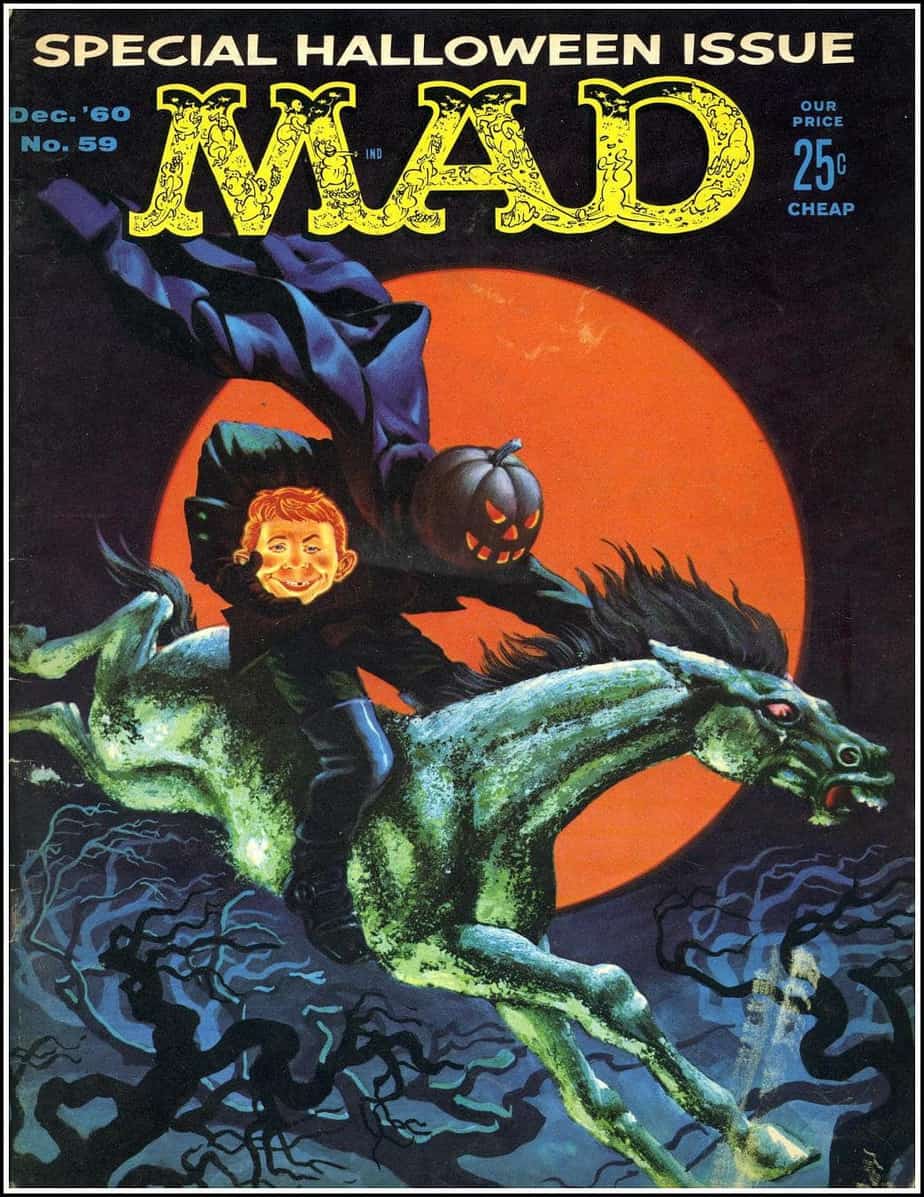
Header image: William Bell Scott – King Arthur Carried to the Land of Enchantment – 1846-62
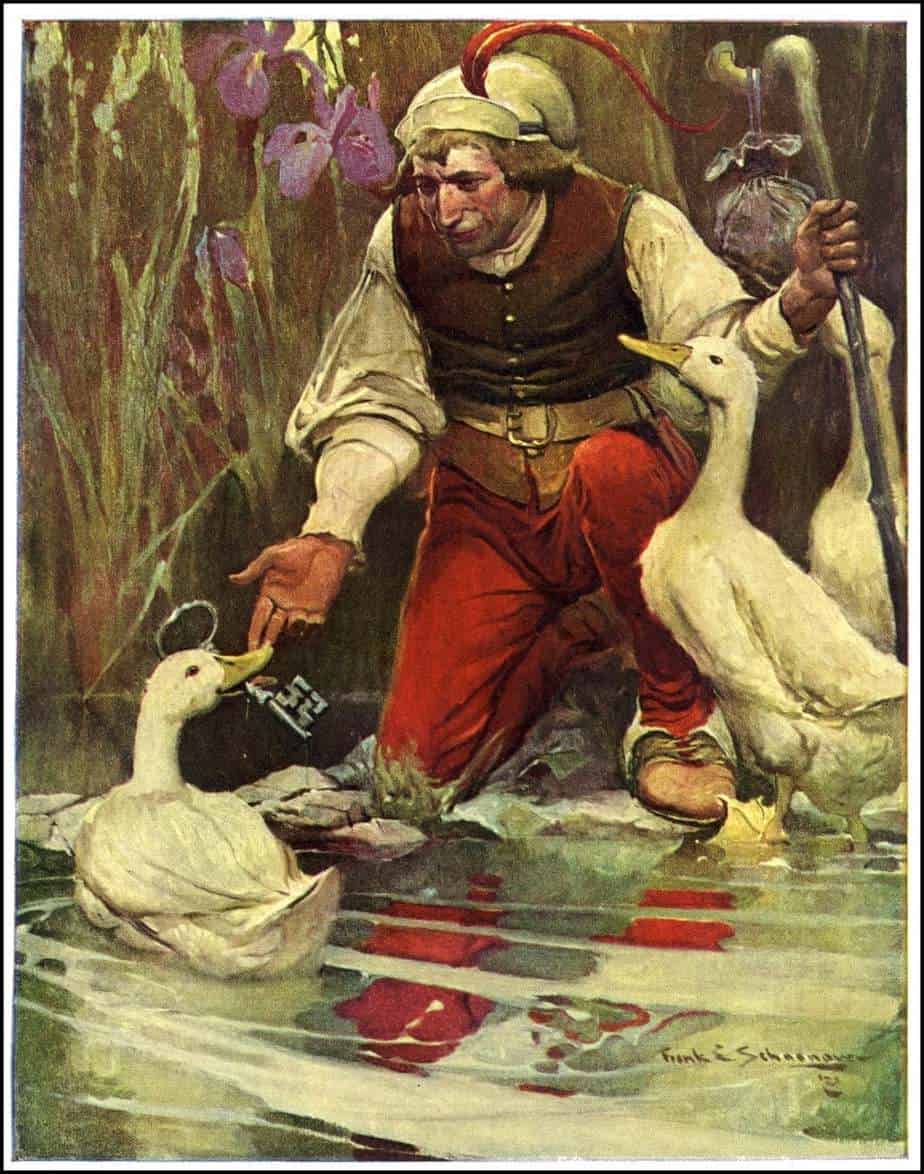
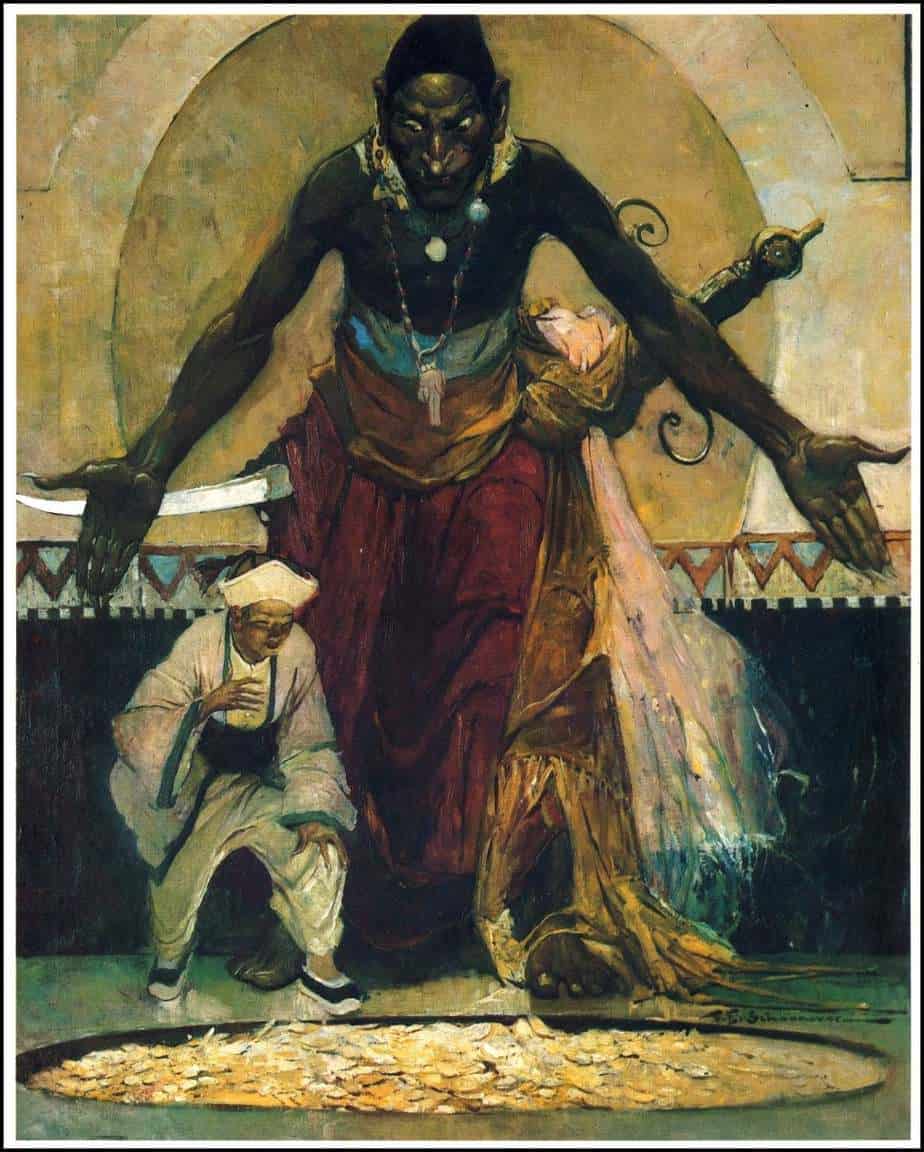
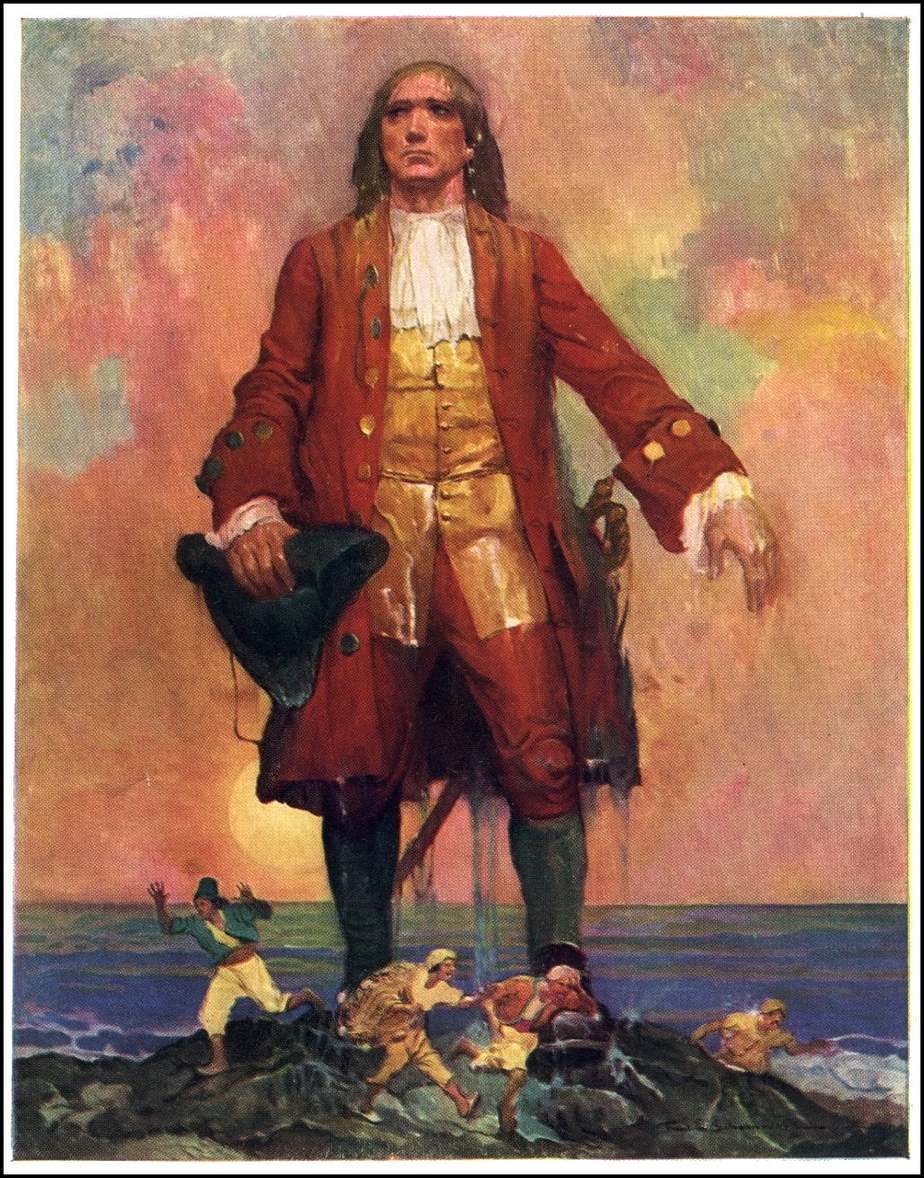
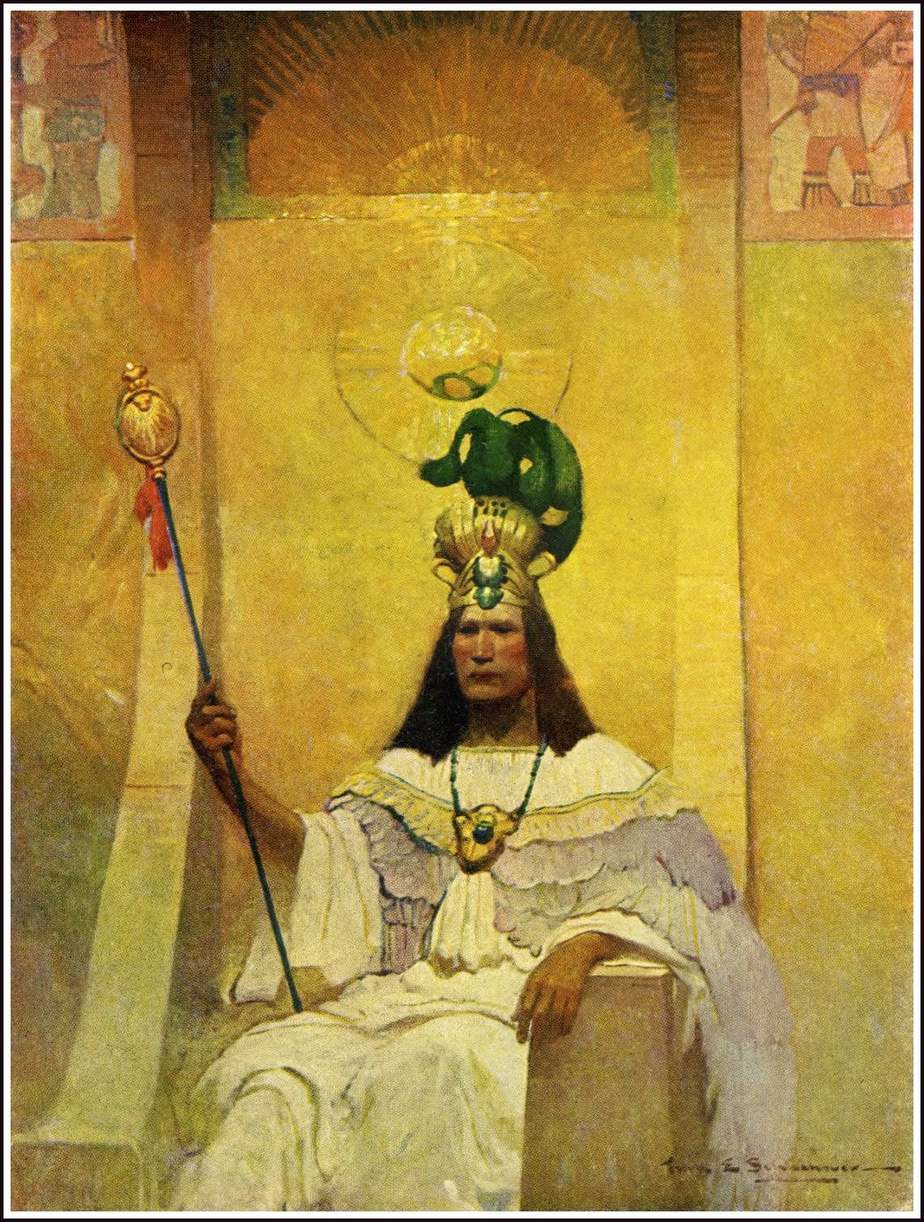
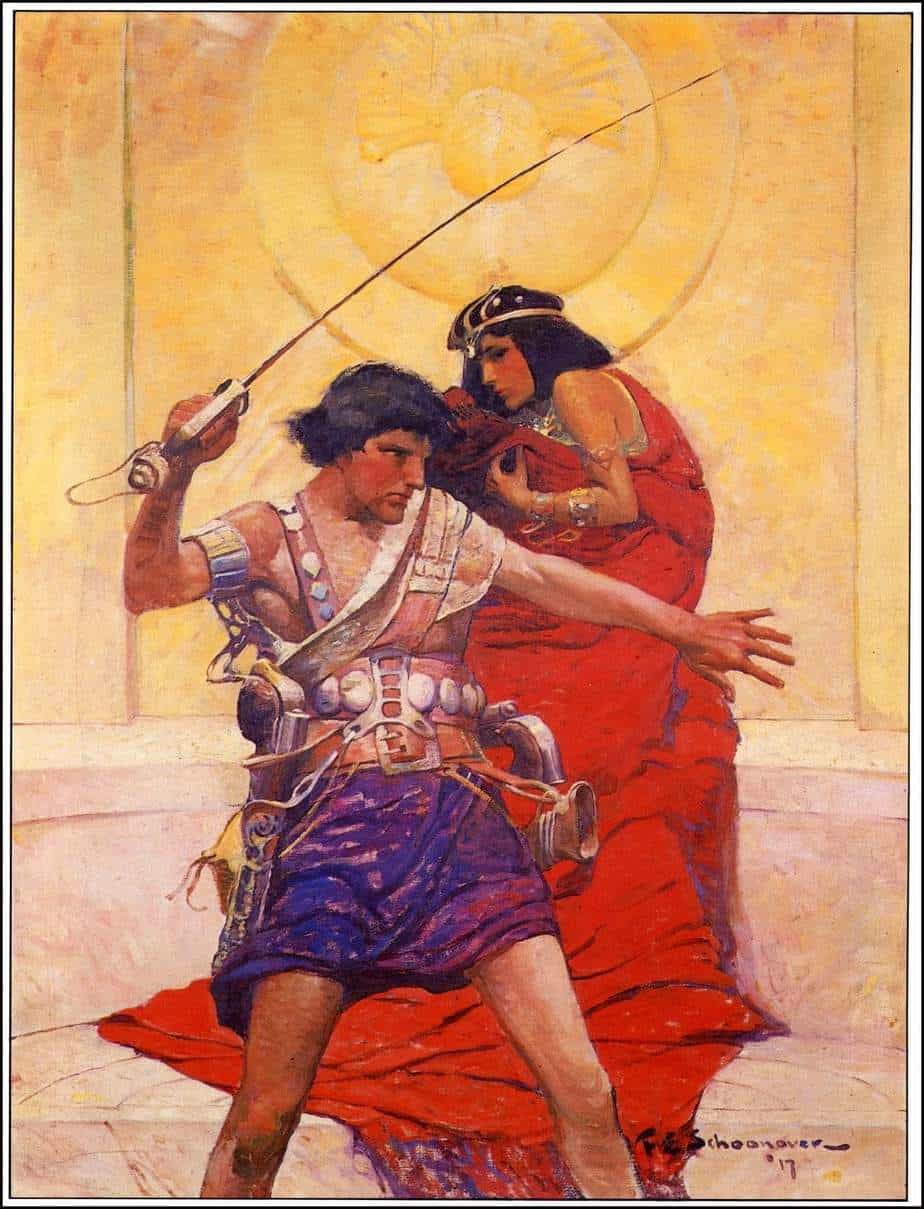
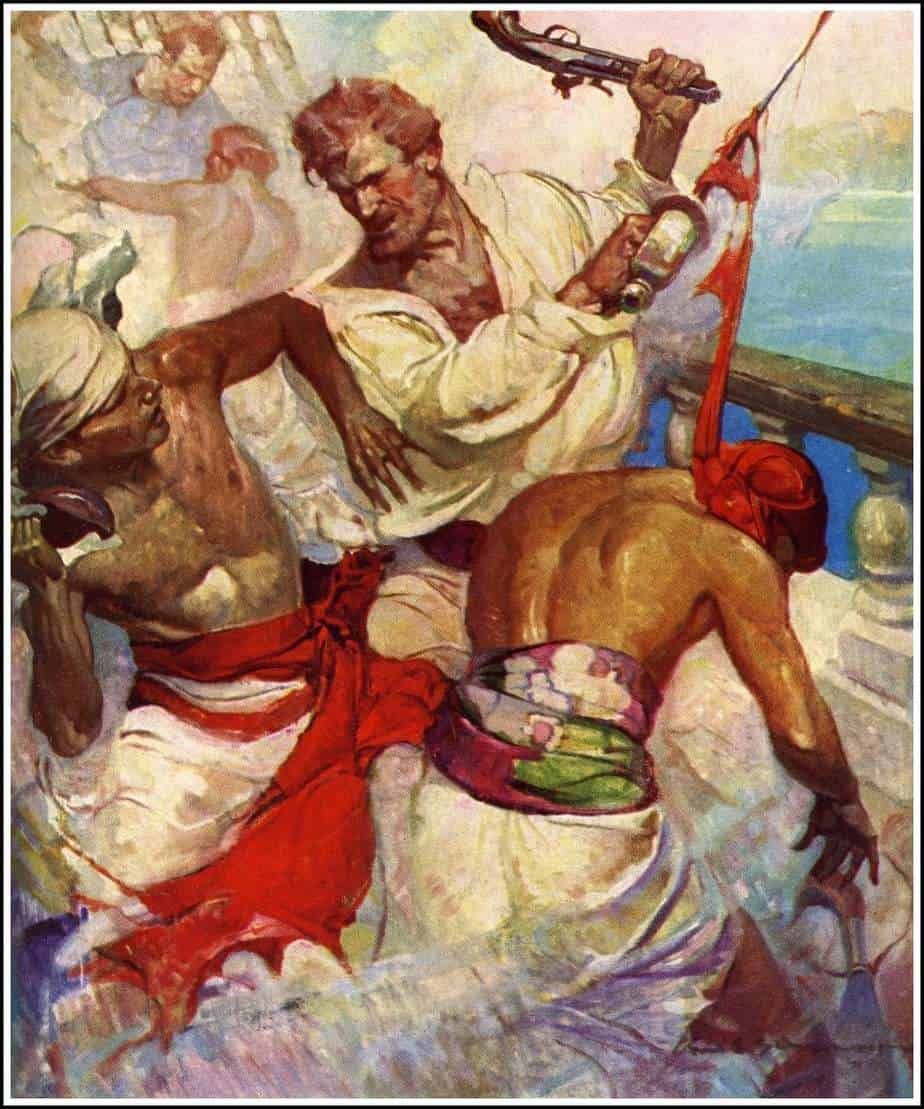
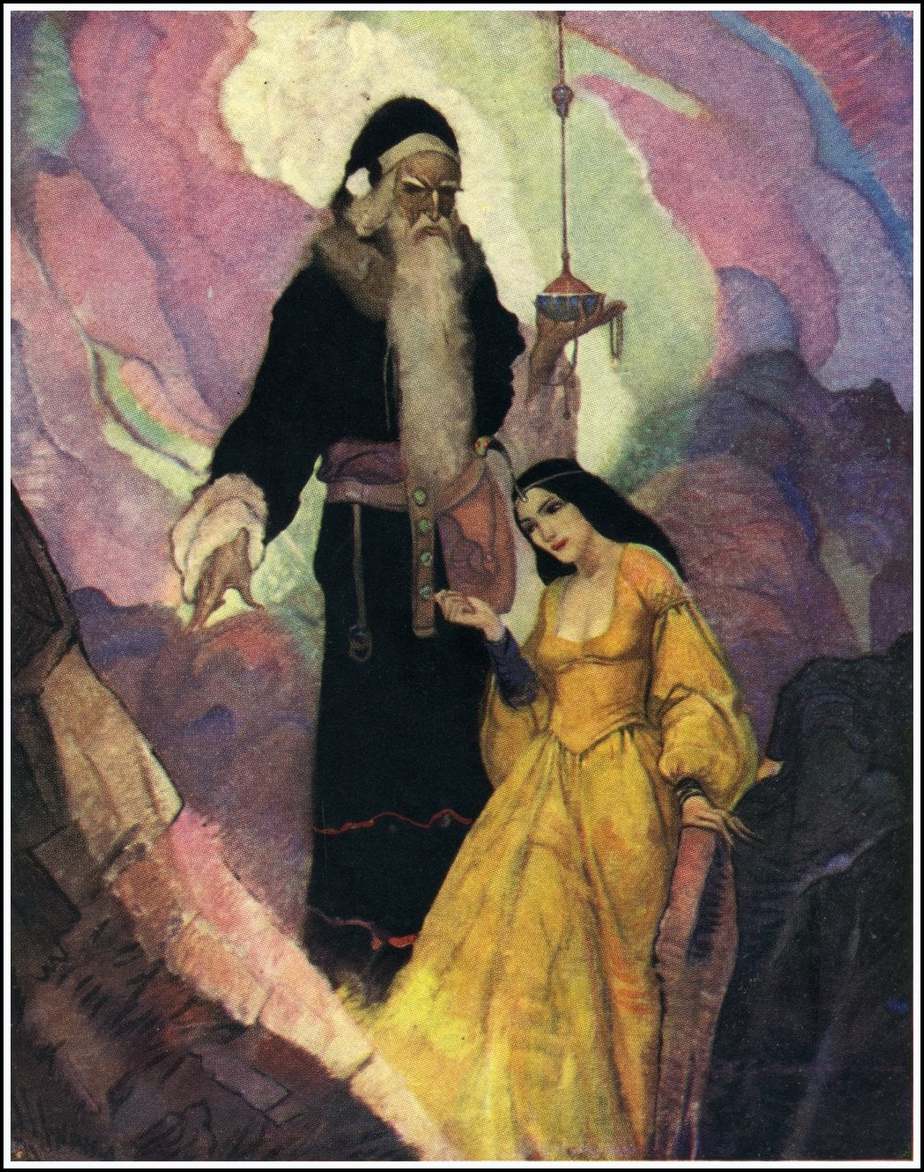
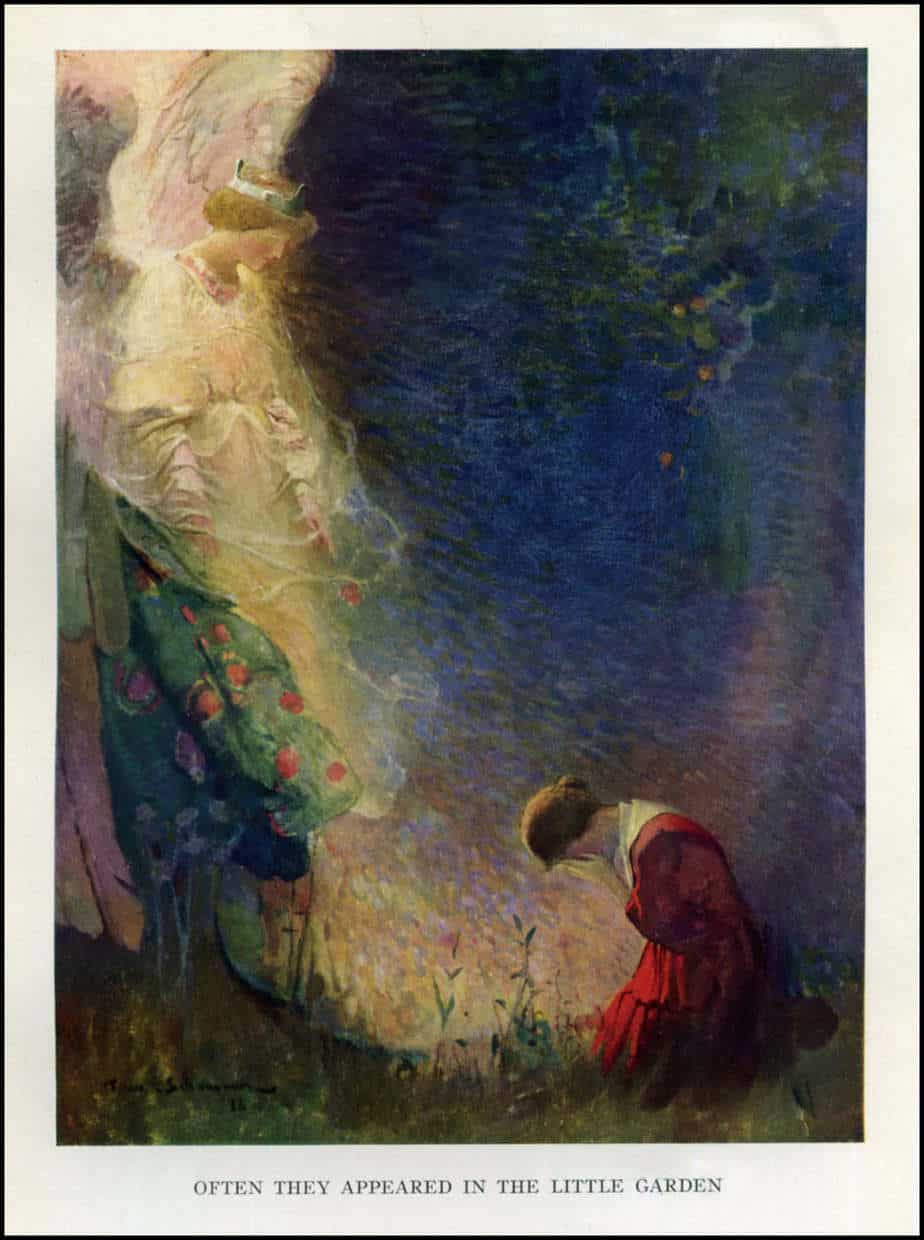
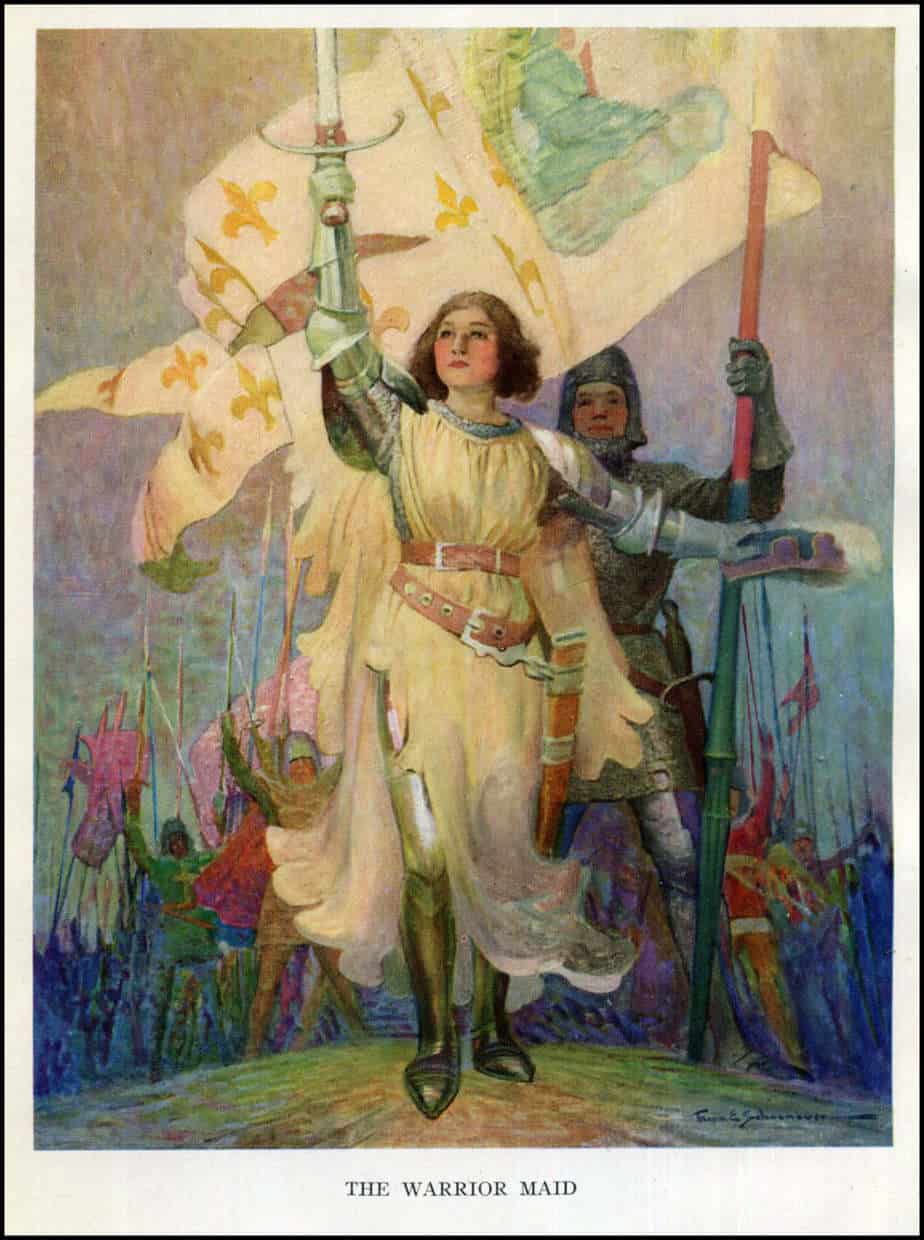
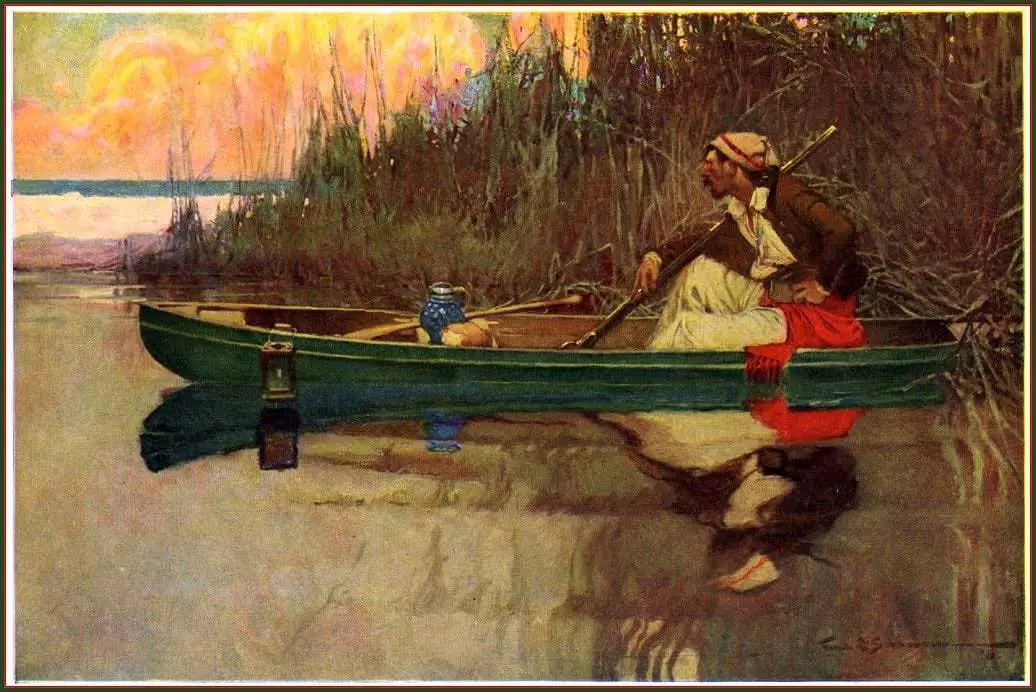
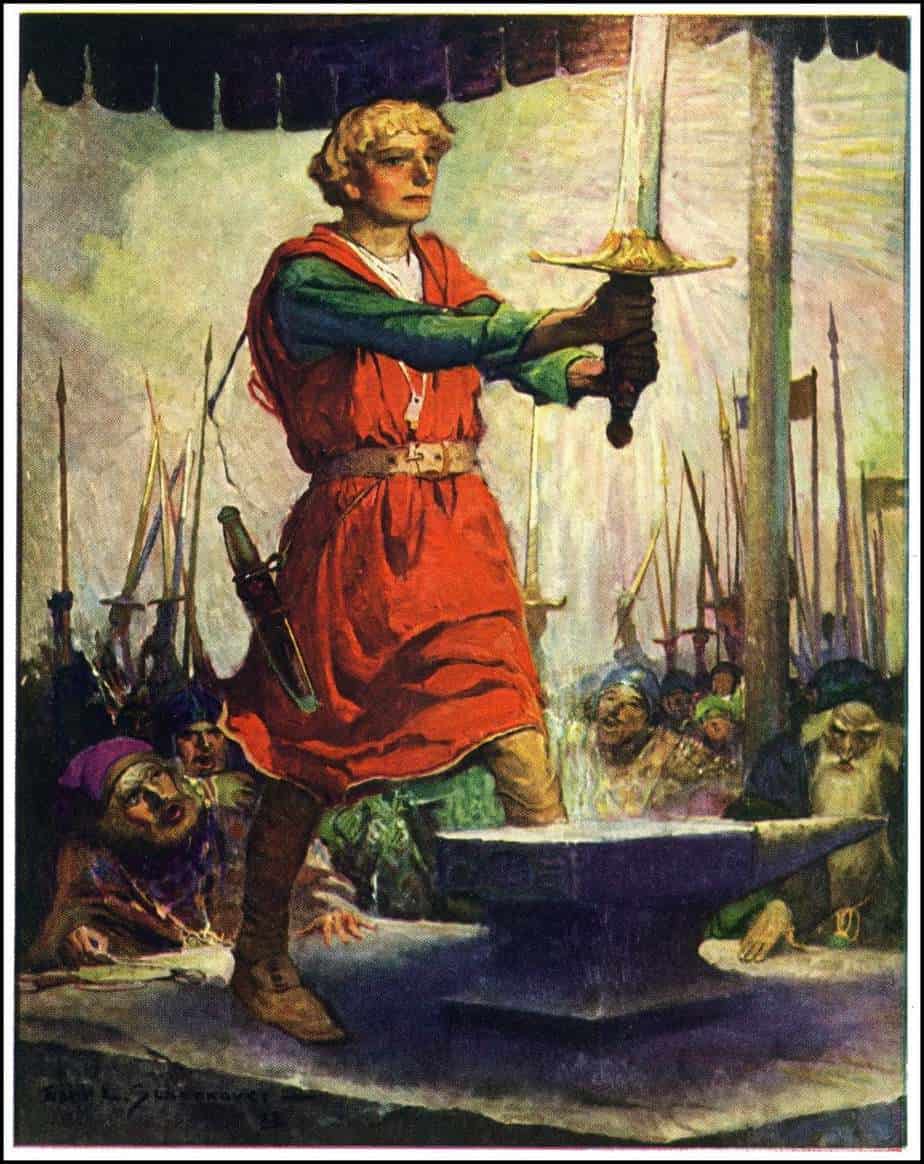
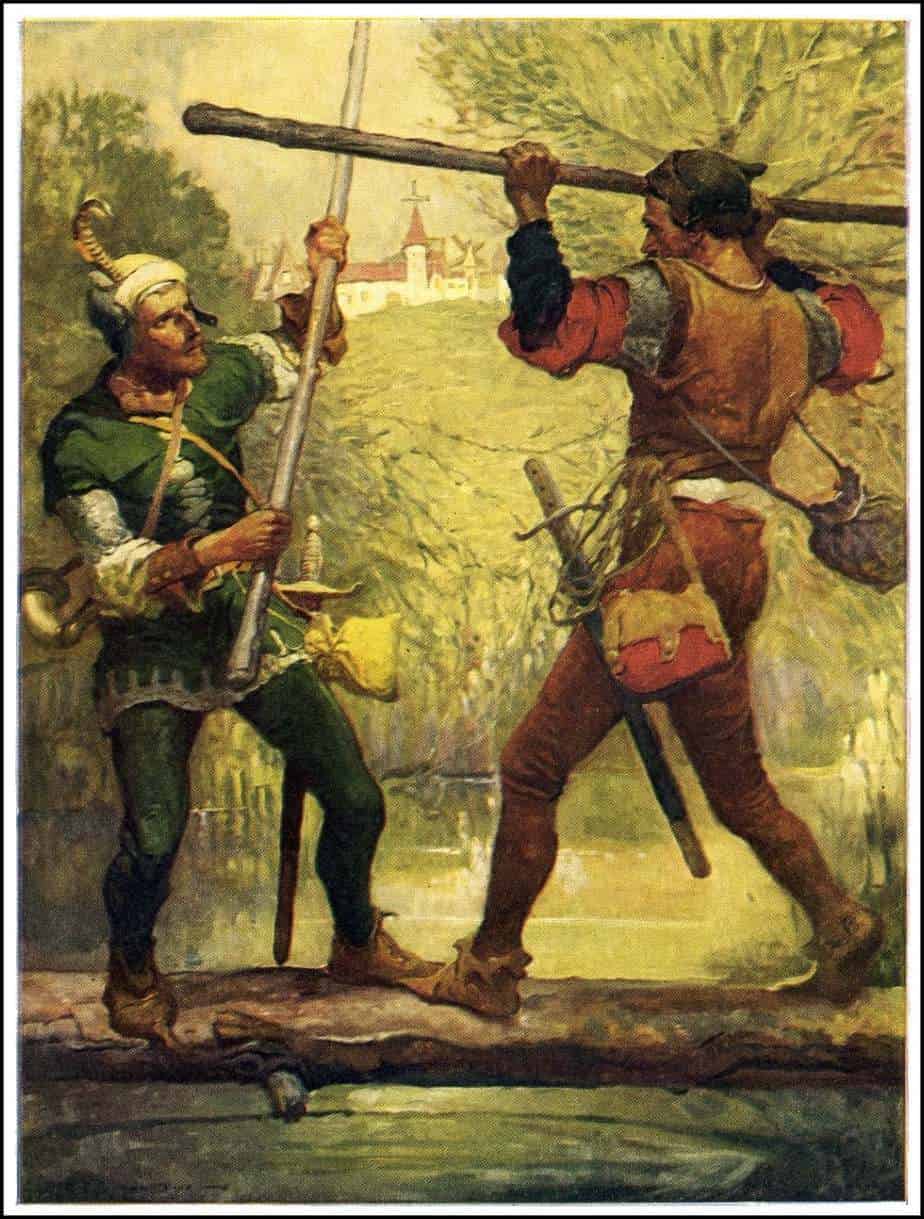
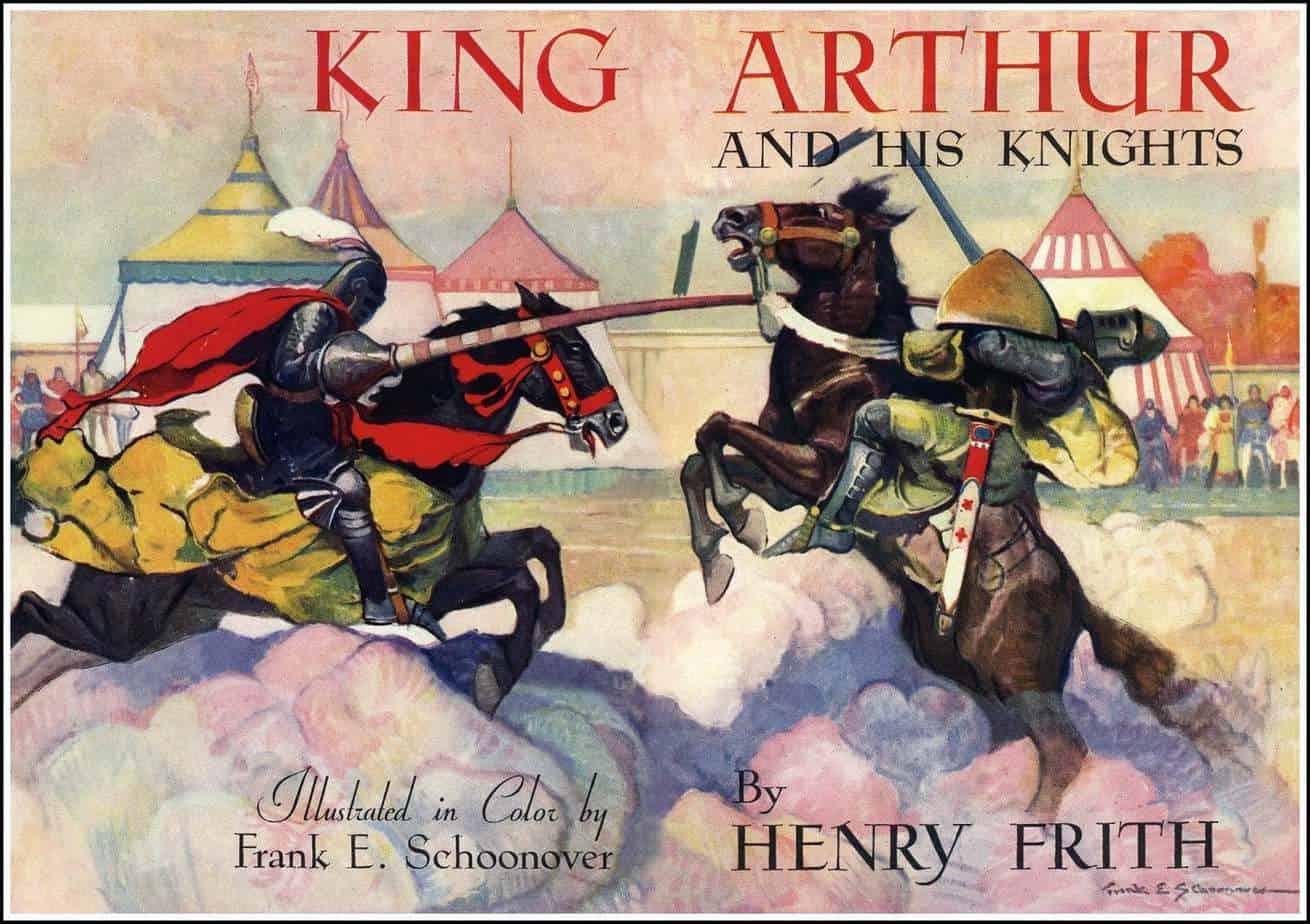
SEE ALSO
- List of works based on King Arthurian Legends
- The Centrality of the Adventure Story, a quote from Marjery Hourihan
- Books For Kids Who Love Arthurian Legend from What We Do All Day
KING ARTHUR AND REPRESENTATION
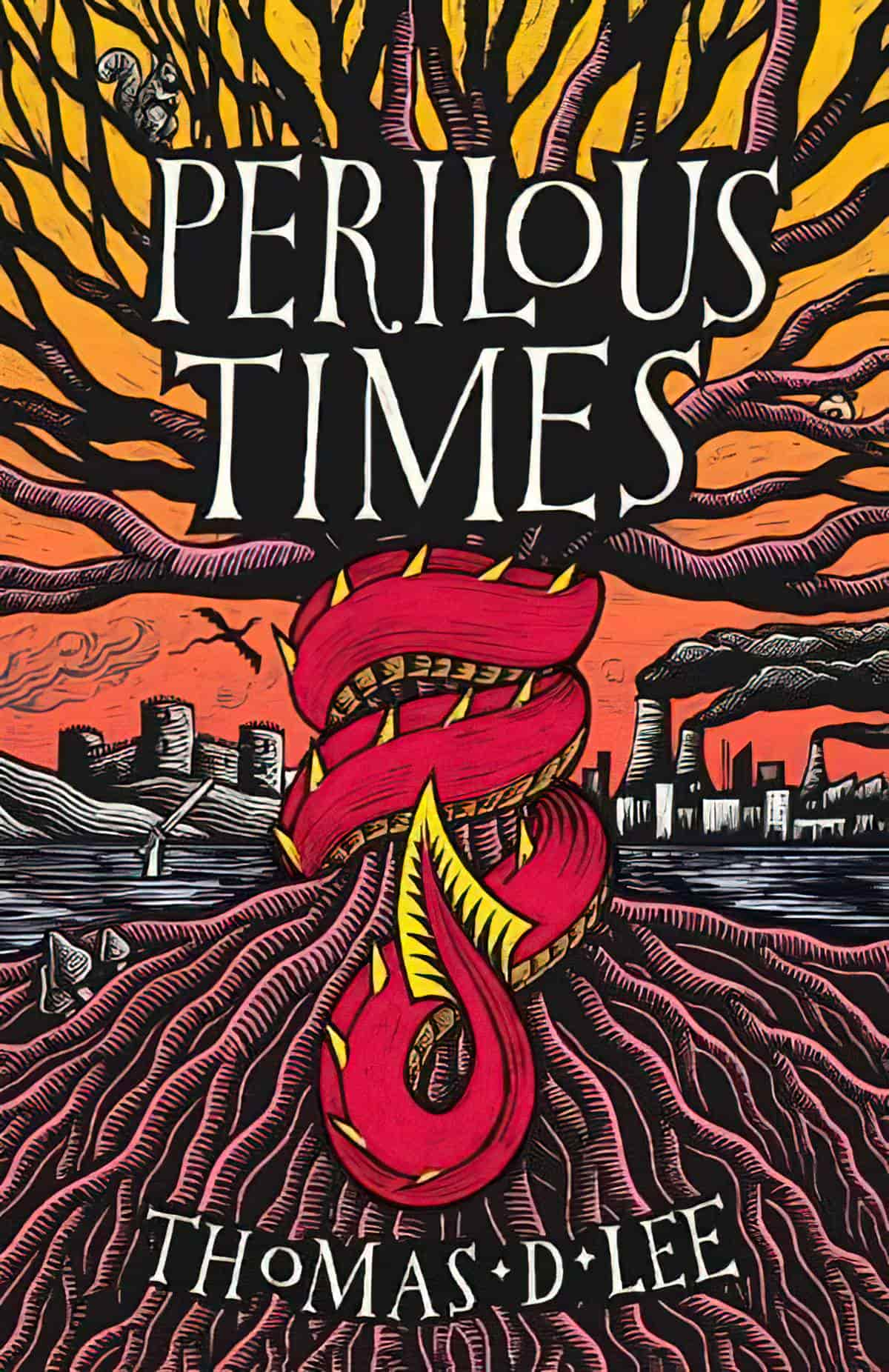
IN PERILOUS TIMES LIKE THESE, THE REALM DOESN’T JUST NEED A HERO.
IT NEEDS A KNIGHT IN SHINING ARMOUR.
Sir Kay and his fellow knights awake from their mythical slumber whenever Britain has need of them; they fought at Agincourt and at the Somme. But in these perilous modern times, the realm is more divided than ever, a dragon has been seen for the first time in centuries, and Kay is not the only ancient and terrible thing to come crawling up out of the ground . . .
Perilous Times is a fiercely entertaining contemporary take on the myths of Camelot, which asks: what happens when the Knights of the Round Table return to fix the problems of the modern world?
This debut is perfect for fans of Terry Pratchett, Neil Gaiman and Ben Aaronovitch.
Representation matters. We know representation matters. But sometimes, you read a book and all of a sudden, you’re hit with HOW MUCH representation matters. There’s a wrenching feeling in your heart and you think, this is what I’ve needed all this time?
I love Arthurian legends, have done for as long as I remember and it was my gateway into fantasy, let’s face it, Arthur is the original chosen one who defeats all the invading hordes and protects the land from evil. My MA dissertation was on Arthurian legends. But.
We all know that Arthurian Legends were… very white. Which is fair, they’re tales of Britain and how chivalrous the Knights were, how distressed the damsels were etc, I can’t expect a random brown person to just turn up.
So imagine my shock at reading a contemporary Arthurian tale, set in near future Britain, OUR Britain, where knights of the round table come back to protect the land from peril, and discovering that a Muslim woman is the protagonist.
Not just a character given a Muslim name and who we get told is Muslim but a character full of anxiety about who she is, how she fits into this country where white is default.
A character constantly trying to prove herself and make herself useful so she’s accepted by her peers. A PERSON who is worried that any small mishap will ruin friendships she’s spent years building. A person like me.
Not just the religion, but the anxiety, the imposter syndrome, like someone will suddenly figure out I don’t belong here. In the team, in the friendship group, wherever the here is. Yes, I know I’m worthy, but try telling my brain to accept that. Anxiety is a bitch.
So my default is to be snarky, if I’m mean first, when you’re being mean, it doesn’t hurt as much, right? But then, we have Mariam. Mariam who finally realises she needs to have faith in herself. She can’t keep looking at others for validation. And that, that hit hard.
Having a Muslim woman, in an Arthurian narrative was pure joy, but then you add on the fact that she is strong, she kicks ass, and she owns her space and existence, now that filled a hole in my heart I didn’t know existed.
Yes, representation matters and we’ve published books inspired by the Middle East, by Muslim cultures and I love them utterly. But we rarely see a Muslim character who holds her own in a Western setting. Especially an Arthurian Britain.
@Gambit589, referring to Perilous Times by Thomas D. Lee
The Knight Without Boundaries: Yiddish and German Arthurian Wigalois Adaptations
This volume explores a core medieval myth, the tale of an Arthurian knight called Wigalois, and the ways it connects the Yiddish-speaking Jews and the German-speaking non-Jews of the Holy Roman Empire. The German Wigalois / Viduvilt adaptations grow from a multistage process: a German text adapted into Yiddish adapted into German, creating adaptations actively shaped by a minority culture within a majority culture. The Knight Without Boundaries: Yiddish and German Arthurian Wigalois Adaptations (Brill, 2021) examines five key moments in the Wigalois / Viduvilt tradition that highlight transitions between narratological and meta-narratological patterns and audiences of different religious-cultural or lingual background.
New Books Network
